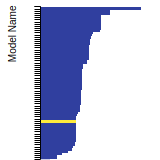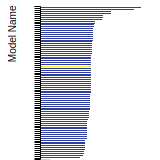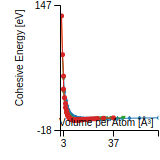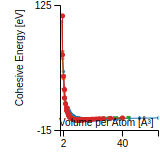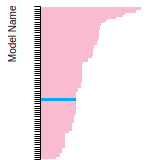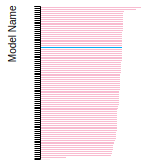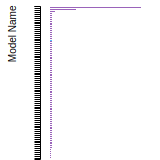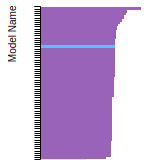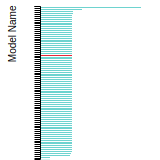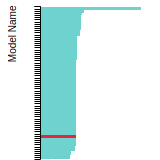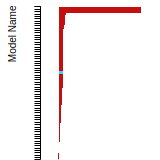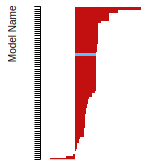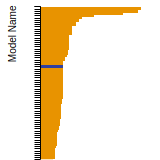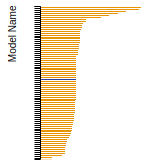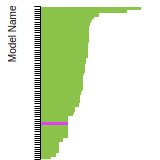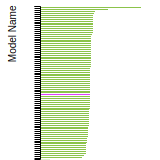 MEAM_LAMMPS_LeeShim_2004_NiCu__MO_409065472403_002
MEAM_LAMMPS_LeeShim_2004_NiCu__MO_409065472403_002
| Title
A single sentence description.
|
MEAM Potential for the Ni-Cu system developed by Lee and Shim (2004) v002 |
|---|---|
| Description
A short description of the Model describing its key features including for example: type of model (pair potential, 3-body potential, EAM, etc.), modeled species (Ac, Ag, ..., Zr), intended purpose, origin, and so on.
|
A semi-empirical interatomic potential, the MEAM, has been applied to obtain an interatomic potential for the Cu–Ni system, based on the previously developed potentials for pure Cu and Ni. |
| Species
The supported atomic species.
| Cu, Ni |
| Disclaimer
A statement of applicability provided by the contributor, informing users of the intended use of this KIM Item.
|
None |
| Content Origin | http://cmse.postech.ac.kr/home_2nnmeam |
| Contributor |
Hyo-Sun Jang |
| Maintainer |
Hyo-Sun Jang |
| Developer |
Byeong-Joo Lee Jae-Hyeok Shim |
| Published on KIM | 2023 |
| How to Cite |
This Model originally published in [1] is archived in OpenKIM [2-5]. [1] Lee B-J, Shim J-H. A modified embedded atom method interatomic potential for the Cu–Ni system. Calphad. 2004;28(2):125–32. doi:10.1016/j.calphad.2004.06.001 — (Primary Source) A primary source is a reference directly related to the item documenting its development, as opposed to other sources that are provided as background information. [2] Lee B-J, Shim J-H. MEAM Potential for the Ni-Cu system developed by Lee and Shim (2004) v002. OpenKIM; 2023. doi:10.25950/2a6ef3ab [3] Afshar Y, Hütter S, Rudd RE, Stukowski A, Tipton WW, Trinkle DR, et al. The modified embedded atom method (MEAM) potential v002. OpenKIM; 2023. doi:10.25950/ee5eba52 [4] Tadmor EB, Elliott RS, Sethna JP, Miller RE, Becker CA. The potential of atomistic simulations and the Knowledgebase of Interatomic Models. JOM. 2011;63(7):17. doi:10.1007/s11837-011-0102-6 [5] Elliott RS, Tadmor EB. Knowledgebase of Interatomic Models (KIM) Application Programming Interface (API). OpenKIM; 2011. doi:10.25950/ff8f563a Click here to download the above citation in BibTeX format. |
| Citations
This panel presents information regarding the papers that have cited the interatomic potential (IP) whose page you are on. The OpenKIM machine learning based Deep Citation framework is used to determine whether the citing article actually used the IP in computations (denoted by "USED") or only provides it as a background citation (denoted by "NOT USED"). For more details on Deep Citation and how to work with this panel, click the documentation link at the top of the panel. The word cloud to the right is generated from the abstracts of IP principle source(s) (given below in "How to Cite") and the citing articles that were determined to have used the IP in order to provide users with a quick sense of the types of physical phenomena to which this IP is applied. The bar chart shows the number of articles that cited the IP per year. Each bar is divided into green (articles that USED the IP) and blue (articles that did NOT USE the IP). Users are encouraged to correct Deep Citation errors in determination by clicking the speech icon next to a citing article and providing updated information. This will be integrated into the next Deep Citation learning cycle, which occurs on a regular basis. OpenKIM acknowledges the support of the Allen Institute for AI through the Semantic Scholar project for providing citation information and full text of articles when available, which are used to train the Deep Citation ML algorithm. |
This panel provides information on past usage of this interatomic potential (IP) powered by the OpenKIM Deep Citation framework. The word cloud indicates typical applications of the potential. The bar chart shows citations per year of this IP (bars are divided into articles that used the IP (green) and those that did not (blue)). The complete list of articles that cited this IP is provided below along with the Deep Citation determination on usage. See the Deep Citation documentation for more information. 
63 Citations (43 used)
Help us to determine which of the papers that cite this potential actually used it to perform calculations. If you know, click the .
USED (high confidence) B. Waters, D. S. Karls, I. Nikiforov, R. Elliott, E. Tadmor, and B. Runnels, “Automated determination of grain boundary energy and potential-dependence using the OpenKIM framework,” Computational Materials Science. 2022. link Times cited: 5 USED (high confidence) M. Hennes, J. Buchwald, and S. G. Mayr, “Structural properties of spherical Cu/Ni nanoparticles,” CrystEngComm. 2012. link Times cited: 6 Abstract: While Cu/Ni bulk alloys—partially in the presence of flat su… read more USED (high confidence) J. Harvey, A. Gheribi, and P. Chartrand, “Accurate determination of the Gibbs energy of Cu-Zr melts using the thermodynamic integration method in Monte Carlo simulations.,” The Journal of chemical physics. 2011. link Times cited: 19 Abstract: The design of multicomponent alloys used in different applic… read more USED (low confidence) M. Wakeda and J. Saida, “Temperature-dependent effect of cooling rate on the melt-quenching process of metallic glasses,” Computational Materials Science. 2023. link Times cited: 2 USED (low confidence) G. Katakareddi and N. Yedla, “The effect of loading methods on the microstructural evolution and degree of strain localization in Cu50Zr50 metallic glass composite nanowires: A molecular dynamics simulation study.,” Journal of molecular graphics & modelling. 2022. link Times cited: 1 USED (low confidence) S. Xu, W. Wu, J. Chang, S. Sha, and B. Wei, “Duplex Solidification Mechanisms of Glass Forming Zr55Cu30Al10Ni5 Alloy During Electromagnetic Levitation Processing,” Metallurgical and Materials Transactions A. 2022. link Times cited: 3 USED (low confidence) S. Oh, X.-gang Lu, Q. Chen, and B.-J. Lee, “Pressure dependence of thermodynamic interaction parameters for binary solid solution phases: An atomistic simulation study,” Calphad-computer Coupling of Phase Diagrams and Thermochemistry. 2021. link Times cited: 0 USED (low confidence) Y. Guan, W. Song, Y. Wang, S. Liu, and Y. Yu, “Dynamic responses in shocked Cu-Zr nanoglasses with gradient microstructure,” International Journal of Plasticity. 2021. link Times cited: 11 USED (low confidence) Z. Jin, X. Li, and K. Lu, “Formation of Stable Schwarz Crystals in Polycrystalline Copper at the Grain Size Limit.,” Physical review letters. 2021. link Times cited: 12 Abstract: A prototype Schwarz crystal (SC) structure of dividing-space… read more USED (low confidence) Y.-L. Guan, L. Dai, J. Shao, and W. Song, “Molecular dynamics study on the nanovoid collapse and local deformation in shocked Cu50Zr50 metallic glasses,” Journal of Non-crystalline Solids. 2021. link Times cited: 11 USED (low confidence) M. Zhang et al., “Interfacial bonding of CuZr metallic glass via oxide: A molecular dynamics study,” Corrosion Science. 2021. link Times cited: 4 USED (low confidence) A. Agrawal and R. Mirzaeifar, “Copper-graphene composites; developing the MEAM potential and investigating their mechanical properties,” Computational Materials Science. 2021. link Times cited: 9 USED (low confidence) Y. Dou, Y. Liu, B. Huddleston, Y. Hammi, and M. Horstemeyer, “A molecular dynamics study of effects of crystal orientation, size scale, and strain rate on penetration mechanisms of monocrystalline copper subjected to impact from a nickel penetrator at very high strain rates,” Acta Mechanica. 2020. link Times cited: 6 USED (low confidence) A.-V. Pham, T. Fang, A.-S. Tran, and T.-H. Chen, “Effect of annealing and deposition of Cu atoms on Ni trench to interface formation and growth mechanisms of Cu coating,” Superlattices and Microstructures. 2020. link Times cited: 8 USED (low confidence) M. Zhang, Q. Li, J. Zhang, G. Zheng, and X. Wang, “The prominent combination of ultrahigh strength and superior tensile plasticity in Cu–Zr nanoglass connected by oxide interfaces: A molecular dynamics study,” Journal of Alloys and Compounds. 2019. link Times cited: 14 USED (low confidence) H. R. A. Ram, K. Kashyap, K. S. Sridhar, K. Venkatesh, K. Gopalakrishna, and R. Keshavamurthy, “Experimental and theoretical prediction of Copper-Nickel nano-phase diagram,” Materials Research Express. 2019. link Times cited: 1 Abstract: Copper and Nickel alloys form binary isomorphous system with… read more USED (low confidence) R. P. Leite and M. Koning, “Nonequilibrium free-energy calculations of fluids using LAMMPS,” Computational Materials Science. 2019. link Times cited: 21 USED (low confidence) Y. Wang, C. Peng, X. Li, Y. Cheng, L. Jia, and L. Wang, “Dynamical mechanical analysis of metallic glass with and without miscibility gap,” Materials Science and Engineering: A. 2018. link Times cited: 2 USED (low confidence) Y.-K. Kim, H. Kim, W. Jung, and B.-J. Lee, “Development and application of Ni-Ti and Ni-Al-Ti 2NN-MEAM interatomic potentials for Ni-base superalloys,” Computational Materials Science. 2017. link Times cited: 24 USED (low confidence) C.-jun Wu, B.-J. Lee, and X. Su, “Modified embedded-atom interatomic potential for Fe-Ni, Cr-Ni and Fe-Cr-Ni systems,” Calphad-computer Coupling of Phase Diagrams and Thermochemistry. 2017. link Times cited: 60 USED (low confidence) T. Kulikova, A. Maiorova, V. Bykov, and K. Shunyaev, “Chemical interaction and thermodynamic properties of (Cu,Ni)-Zr glass-forming alloys,” The European Physical Journal Special Topics. 2017. link Times cited: 6 USED (low confidence) A. P. Moore, B. Beeler, C. Deo, M. Baskes, and M. Okuniewski, “Atomistic modeling of high temperature uranium–zirconium alloy structure and thermodynamics,” Journal of Nuclear Materials. 2015. link Times cited: 41 USED (low confidence) S. Feng et al., “Atomic structure of shear bands in Cu64Zr36 metallic glasses studied by molecular dynamics simulations,” Acta Materialia. 2015. link Times cited: 98 USED (low confidence) W. Dong, Z. Chen, and B.-J. Lee, “Modified embedded-atom interatomic potential for Co–W and Al–W systems,” Transactions of Nonferrous Metals Society of China. 2015. link Times cited: 9 USED (low confidence) B.-M. Lee, J. Shim, J.-Y. Suh, and B.-J. Lee, “A semi-empirical methodology to predict hydrogen permeability in amorphous alloy membranes,” Journal of Membrane Science. 2014. link Times cited: 4 USED (low confidence) M. Trybula, N. Jakse, W. Gasior, and A. Pasturel, “Structural and physicochemical properties of liquid Al-Zn alloys: a combined study based on molecular dynamics simulations and the quasi-lattice theory.,” The Journal of chemical physics. 2014. link Times cited: 15 Abstract: Ordering phenomena have been investigated in liquid Al-Zn al… read more USED (low confidence) J. Harvey, A. Gheribi, and P. Chartrand, “Thermodynamic integration based on classical atomistic simulations to determine the Gibbs energy of condensed phases: Calculation of the aluminum-zirconium system,” Physical Review B. 2012. link Times cited: 17 Abstract: In this work, an in silico procedure to generate a fully coh… read more USED (low confidence) W. Dong, H.-K. Kim, W. Ko, B.-M. Lee, and B.-J. Lee, “Atomistic modeling of pure Co and Co–Al system,” Calphad-computer Coupling of Phase Diagrams and Thermochemistry. 2012. link Times cited: 42 USED (low confidence) K. Park, H. Park, and E. Fleury, “Strain localization in annealed Cu50Zr50 metallic glass,” Materials Science and Engineering A-structural Materials Properties Microstructure and Processing. 2011. link Times cited: 7 USED (low confidence) Y. Zhang, N. Mattern, and J. Eckert, “Molecular dynamic simulation study of the structural anisotropy in Cu50Zr50 and Cu64.5Zr35.5 metallic glasses induced by static uniaxial loading within the elastic regime,” Journal of Alloys and Compounds. 2011. link Times cited: 7 USED (low confidence) Y. Zhang, N. Mattern, and J. Eckert, “Effect of uniaxial loading on the structural anisotropy and the dynamics of atoms of Cu50Zr50 metallic glasses within the elastic regime studied by molecular dynamics simulation,” Acta Materialia. 2011. link Times cited: 26 USED (low confidence) B.-J. Lee, W. Ko, H.-K. Kim, and E.-H. Kim, “The modified embedded-atom method interatomic potentials and recent progress in atomistic simulations,” Calphad-computer Coupling of Phase Diagrams and Thermochemistry. 2010. link Times cited: 137 USED (low confidence) K. Park, Y. Shibutani, M. Falk, B.-J. Lee, and J.-C. Lee, “Shear localization and the plasticity of bulk amorphous alloys,” Scripta Materialia. 2010. link Times cited: 30 USED (low confidence) Y.-M. Kim, N. Kim, and B.-J. Lee, “Atomistic Modeling of pure Mg and Mg―Al systems,” Calphad-computer Coupling of Phase Diagrams and Thermochemistry. 2009. link Times cited: 119 USED (low confidence) C. Lee, K. Park, B.-J. Lee, Y. Shibutani, and J.-C. Lee, “Structural disordering of amorphous alloys: A molecular dynamics analysis,” Scripta Materialia. 2009. link Times cited: 19 USED (low confidence) S.-G. Kim et al., “Semi-Empirical Potential Methods for Atomistic Simulations of Metals and Their Construction Procedures,” Journal of Engineering Materials and Technology-transactions of The Asme. 2009. link Times cited: 20 Abstract: General theory of semi-empirical potential methods including… read more USED (low confidence) K. Kang, I. Sa, J.-C. Lee, E. Fleury, and B.-J. Lee, “Atomistic modeling of the Cu-Zr-Ag bulk metallic glass system,” Scripta Materialia. 2009. link Times cited: 26 USED (low confidence) C. Lee, K. Park, B.-J. Lee, J. Shim, and J.-C. Lee, “Understanding the Plasticity of Amorphous Alloys Via the Interpretation of Structural Evolution Inside a Shear Band,” Korean Journal of Materials Research. 2009. link Times cited: 1 Abstract: )Abstract The effect of the initial packing structure on the… read more USED (low confidence) I. Sa and B.-J. Lee, “Modified embedded-atom method interatomic potentials for the Fe-Nb and Fe-Ti binary systems,” Scripta Materialia. 2008. link Times cited: 48 USED (low confidence) M. Lee, C. Lee, K.-R. Lee, E. Ma, and J.-C. Lee, “Networked interpenetrating connections of icosahedra: Effects on shear transformations in metallic glass,” Acta Materialia. 2011. link Times cited: 191 USED (low confidence) K. Kang, K. Park, J.-C. Lee, E. Fleury, and B.-J. Lee, “Correlation between plasticity and other materials properties of Cu–Zr bulk metallic glasses: An atomistic simulation study,” Acta Materialia. 2011. link Times cited: 29 USED (low confidence) Y.-M. Kim, Y.-H. Shin, and B.-J. Lee, “Modified embedded-atom method interatomic potentials for pure Mn and the Fe–Mn system,” Acta Materialia. 2009. link Times cited: 64 NOT USED (low confidence) H. Mei et al., “Development of Machine Learning and Empirical Interatomic Potentials for the Binary Zr-Sn System,” Journal of Nuclear Materials. 2023. link Times cited: 0 NOT USED (low confidence) J. Zhang, A. Quintana, E. Menéndez, M. Coll, E. Pellicer, and J. Sort, “Electrodeposited Ni-Based Magnetic Mesoporous Films as Smart Surfaces for Atomic Layer Deposition: An ‘All-Chemical’ Deposition Approach toward 3D Nanoengineered Composite Layers.,” ACS applied materials & interfaces. 2018. link Times cited: 16 Abstract: Mesoporous Ni and Cu-Ni (Cu20Ni80 and Cu45Ni55 in at. %) fil… read more NOT USED (low confidence) D. Miracle, G. Wilks, A. Dahlman, and J. Dahlman, “The Strength of Chemical Bonds in Solids and Liquids (Preprint).” 2011. link Times cited: 13 NOT USED (low confidence) E. Pellicer et al., “Grain boundary segregation and interdiffusion effects in nickel-copper alloys: an effective means to improve the thermal stability of nanocrystalline nickel.,” ACS applied materials & interfaces. 2011. link Times cited: 65 Abstract: Nanocrystalline (nc) Ni films show pronounced grain growth a… read more NOT USED (low confidence) J. Li, X. Dai, S. Liang, K. Tai, Y. Kong, and B. Liu, “Interatomic potentials of the binary transition metal systems and some applications in materials physics,” Physics Reports. 2008. link Times cited: 110 NOT USED (high confidence) O. G. Nicholls, D. Frost, V. Tuli, J. Smutná, M. Wenman, and P. Burr, “Transferability of Zr-Zr interatomic potentials,” Journal of Nuclear Materials. 2022. link Times cited: 6 NOT USED (high confidence) S.-S. Shin, H.-K. Kim, J.-C. Lee, and I. Park, “Effect of Sub-Tg Annealing on the Corrosion Resistance of the Cu–Zr Amorphous Alloys,” Acta Metallurgica Sinica (English Letters). 2018. link Times cited: 6 NOT USED (high confidence) B.-M. Lee and B.-J. Lee, “A Comparative Study on Hydrogen Diffusion in Amorphous and Crystalline Metals Using a Molecular Dynamics Simulation,” Metallurgical and Materials Transactions A. 2014. link Times cited: 35 NOT USED (high confidence) D. Belashchenko, “Computer simulation of liquid metals,” Physics—Uspekhi. 2013. link Times cited: 84 Abstract: Methods for and the results of the computer simulation of li… read more NOT USED (high confidence) H. Kim, M. Lee, K.-R. Lee, and J.-C. Lee, “How can a minor element added to a binary amorphous alloy simultaneously improve the plasticity and glass-forming ability?,” Acta Materialia. 2013. link Times cited: 55 NOT USED (high confidence) B.-M. Lee and B.-J. Lee, “Probing the hydrogen movement in Zr-Cu amorphous alloys using molecular dynamics simulations,” 2011 IEEE Nanotechnology Materials and Devices Conference. 2011. link Times cited: 0 Abstract: Zr-based amorphous alloys, showing hydrogen permeance compar… read more NOT USED (high confidence) X. J. Han and H. Schober, “Transport properties and Stokes-Einstein relation in a computer-simulated glass-forming Cu 33 . 3 Zr 66 . 7 melt,” Physical Review B. 2011. link Times cited: 66 Abstract: Molecular dynamics simulation with a modified embedded atom … read more NOT USED (high confidence) E. Lee and B.-J. Lee, “Modified embedded-atom method interatomic potential for the Fe–Al system,” Journal of Physics: Condensed Matter. 2010. link Times cited: 100 Abstract: An interatomic potential for the Fe–Al binary system has bee… read more NOT USED (high confidence) A. M. Nieves, V. Vitek, and T. Sinno, “Atomistic analysis of phase segregation patterning in binary thin films using applied mechanical fields,” Journal of Applied Physics. 2010. link Times cited: 5 Abstract: The patterned compositional evolution in thin films of a bin… read more NOT USED (high confidence) G. Bonny, R. Pasianot, and L. Malerba, “Fitting interatomic potentials consistent with thermodynamics: Fe, Cu, Ni and their alloys,” Philosophical Magazine. 2009. link Times cited: 24 Abstract: In computational materials science, many atomistic methods h… read more NOT USED (high confidence) E. C. Do, Y.-H. Shin, and B.-J. Lee, “Atomistic modeling of III–V nitrides: modified embedded-atom method interatomic potentials for GaN, InN and Ga1−xInxN,” Journal of Physics: Condensed Matter. 2009. link Times cited: 26 Abstract: Modified embedded-atom method (MEAM) interatomic potentials … read more NOT USED (high confidence) M. Mendelev, M. Kramer, R. Ott, D. Sordelet, D. Yagodin, and P. Popel,’ “Development of suitable interatomic potentials for simulation of liquid and amorphous Cu–Zr alloys,” Philosophical Magazine. 2009. link Times cited: 334 Abstract: We present a new semi-empirical potential suitable for molec… read more NOT USED (high confidence) S. Valone and M. Baskes, “Self-Irradiation Cascade Simulations in Plutonium Metal: Model Behavior at High Energy,” Journal of Computer-Aided Materials Design. 2007. link Times cited: 10 NOT USED (high confidence) J.-S. Kim, Y. Koo, and B.-J. Lee, “Modified embedded-atom method interatomic potential for the Fe–Pt alloy system,” Journal of Materials Research. 2006. link Times cited: 36 Abstract: A semi-empirical interatomic potential formalism, the modifi… read more NOT USED (high confidence) N. Vuksic, “New Zirconium Hydrogen Second Nearest Neighbor Modified Embedded Atom Method (MEAM) Potential For Simulation of Stacking Fault Energy Along the < 011̄0 > Path Of The Hexagonal Closely Packed Lattice Basal Plane.” 2014. link Times cited: 0 Abstract: A new Modified Embedded Atom Method (MEAM) potential for zir… read more |
| Funding | Not available |
| Short KIM ID
The unique KIM identifier code.
| MO_409065472403_002 |
| Extended KIM ID
The long form of the KIM ID including a human readable prefix (100 characters max), two underscores, and the Short KIM ID. Extended KIM IDs can only contain alpha-numeric characters (letters and digits) and underscores and must begin with a letter.
| MEAM_LAMMPS_LeeShim_2004_NiCu__MO_409065472403_002 |
| DOI |
10.25950/2a6ef3ab https://doi.org/10.25950/2a6ef3ab https://commons.datacite.org/doi.org/10.25950/2a6ef3ab |
| KIM Item Type
Specifies whether this is a Portable Model (software implementation of an interatomic model); Portable Model with parameter file (parameter file to be read in by a Model Driver); Model Driver (software implementation of an interatomic model that reads in parameters).
| Portable Model using Model Driver MEAM_LAMMPS__MD_249792265679_002 |
| Driver | MEAM_LAMMPS__MD_249792265679_002 |
| KIM API Version | 2.2 |
| Potential Type | meam |
| Previous Version | MEAM_LAMMPS_LeeShim_2004_NiCu__MO_409065472403_001 |
| Grade | Name | Category | Brief Description | Full Results | Aux File(s) |
|---|---|---|---|---|---|
| P | vc-species-supported-as-stated | mandatory | The model supports all species it claims to support; see full description. |
Results | Files |
| P | vc-periodicity-support | mandatory | Periodic boundary conditions are handled correctly; see full description. |
Results | Files |
| P | vc-permutation-symmetry | mandatory | Total energy and forces are unchanged when swapping atoms of the same species; see full description. |
Results | Files |
| A | vc-forces-numerical-derivative | consistency | Forces computed by the model agree with numerical derivatives of the energy; see full description. |
Results | Files |
| F | vc-dimer-continuity-c1 | informational | The energy versus separation relation of a pair of atoms is C1 continuous (i.e. the function and its first derivative are continuous); see full description. |
Results | Files |
| P | vc-objectivity | informational | Total energy is unchanged and forces transform correctly under rigid-body translation and rotation; see full description. |
Results | Files |
| P | vc-inversion-symmetry | informational | Total energy is unchanged and forces change sign when inverting a configuration through the origin; see full description. |
Results | Files |
| P | vc-memory-leak | informational | The model code does not have memory leaks (i.e. it releases all allocated memory at the end); see full description. |
Results | Files |
| P | vc-thread-safe | mandatory | The model returns the same energy and forces when computed in serial and when using parallel threads for a set of configurations. Note that this is not a guarantee of thread safety; see full description. |
Results | Files |
| P | vc-unit-conversion | mandatory | The model is able to correctly convert its energy and/or forces to different unit sets; see full description. |
Results | Files |
BCC Lattice Constant
This bar chart plot shows the mono-atomic body-centered cubic (bcc) lattice constant predicted by the current model (shown in the unique color) compared with the predictions for all other models in the OpenKIM Repository that support the species. The vertical bars show the average and standard deviation (one sigma) bounds for all model predictions. Graphs are generated for each species supported by the model.
Cohesive Energy Graph
This graph shows the cohesive energy versus volume-per-atom for the current mode for four mono-atomic cubic phases (body-centered cubic (bcc), face-centered cubic (fcc), simple cubic (sc), and diamond). The curve with the lowest minimum is the ground state of the crystal if stable. (The crystal structure is enforced in these calculations, so the phase may not be stable.) Graphs are generated for each species supported by the model.
Diamond Lattice Constant
This bar chart plot shows the mono-atomic face-centered diamond lattice constant predicted by the current model (shown in the unique color) compared with the predictions for all other models in the OpenKIM Repository that support the species. The vertical bars show the average and standard deviation (one sigma) bounds for all model predictions. Graphs are generated for each species supported by the model.
Dislocation Core Energies
This graph shows the dislocation core energy of a cubic crystal at zero temperature and pressure for a specific set of dislocation core cutoff radii. After obtaining the total energy of the system from conjugate gradient minimizations, non-singular, isotropic and anisotropic elasticity are applied to obtain the dislocation core energy for each of these supercells with different dipole distances. Graphs are generated for each species supported by the model.
(No matching species)FCC Elastic Constants
This bar chart plot shows the mono-atomic face-centered cubic (fcc) elastic constants predicted by the current model (shown in blue) compared with the predictions for all other models in the OpenKIM Repository that support the species. The vertical bars show the average and standard deviation (one sigma) bounds for all model predictions. Graphs are generated for each species supported by the model.
FCC Lattice Constant
This bar chart plot shows the mono-atomic face-centered cubic (fcc) lattice constant predicted by the current model (shown in red) compared with the predictions for all other models in the OpenKIM Repository that support the species. The vertical bars show the average and standard deviation (one sigma) bounds for all model predictions. Graphs are generated for each species supported by the model.
FCC Stacking Fault Energies
This bar chart plot shows the intrinsic and extrinsic stacking fault energies as well as the unstable stacking and unstable twinning energies for face-centered cubic (fcc) predicted by the current model (shown in blue) compared with the predictions for all other models in the OpenKIM Repository that support the species. The vertical bars show the average and standard deviation (one sigma) bounds for all model predictions. Graphs are generated for each species supported by the model.
FCC Surface Energies
This bar chart plot shows the mono-atomic face-centered cubic (fcc) relaxed surface energies predicted by the current model (shown in blue) compared with the predictions for all other models in the OpenKIM Repository that support the species. The vertical bars show the average and standard deviation (one sigma) bounds for all model predictions. Graphs are generated for each species supported by the model.
SC Lattice Constant
This bar chart plot shows the mono-atomic simple cubic (sc) lattice constant predicted by the current model (shown in the unique color) compared with the predictions for all other models in the OpenKIM Repository that support the species. The vertical bars show the average and standard deviation (one sigma) bounds for all model predictions. Graphs are generated for each species supported by the model.
Cubic Crystal Basic Properties Table
Species: CuSpecies: Ni
Creators:
Contributor: karls
Publication Year: 2019
DOI: https://doi.org/10.25950/64cb38c5
This Test Driver uses LAMMPS to compute the cohesive energy of a given monoatomic cubic lattice (fcc, bcc, sc, or diamond) at a variety of lattice spacings. The lattice spacings range from a_min (=a_min_frac*a_0) to a_max (=a_max_frac*a_0) where a_0, a_min_frac, and a_max_frac are read from stdin (a_0 is typically approximately equal to the equilibrium lattice constant). The precise scaling and number of lattice spacings sampled between a_min and a_0 (a_0 and a_max) is specified by two additional parameters passed from stdin: N_lower and samplespacing_lower (N_upper and samplespacing_upper). Please see README.txt for further details.
| Test | Test Results | Link to Test Results page | Benchmark time
Usertime multiplied by the Whetstone Benchmark. This number can be used (approximately) to compare the performance of different models independently of the architecture on which the test was run.
Measured in Millions of Whetstone Instructions (MWI) |
|---|---|---|---|
| Cohesive energy versus lattice constant curve for bcc Cu v004 | view | 6405 | |
| Cohesive energy versus lattice constant curve for bcc Ni v004 | view | 6405 | |
| Cohesive energy versus lattice constant curve for diamond Cu v004 | view | 5749 | |
| Cohesive energy versus lattice constant curve for diamond Ni v004 | view | 6626 | |
| Cohesive energy versus lattice constant curve for fcc Cu v004 | view | 6552 | |
| Cohesive energy versus lattice constant curve for fcc Ni v004 | view | 6684 | |
| Cohesive energy versus lattice constant curve for sc Cu v004 | view | 6626 | |
| Cohesive energy versus lattice constant curve for sc Ni v004 | view | 6699 |
Creators: Junhao Li and Ellad Tadmor
Contributor: tadmor
Publication Year: 2019
DOI: https://doi.org/10.25950/5853fb8f
Computes the cubic elastic constants for some common crystal types (fcc, bcc, sc, diamond) by calculating the hessian of the energy density with respect to strain. An estimate of the error associated with the numerical differentiation performed is reported.
| Test | Test Results | Link to Test Results page | Benchmark time
Usertime multiplied by the Whetstone Benchmark. This number can be used (approximately) to compare the performance of different models independently of the architecture on which the test was run.
Measured in Millions of Whetstone Instructions (MWI) |
|---|---|---|---|
| Elastic constants for bcc Cu at zero temperature v006 | view | 19474 | |
| Elastic constants for bcc Ni at zero temperature v006 | view | 20320 | |
| Elastic constants for diamond Cu at zero temperature v001 | view | 38356 | |
| Elastic constants for diamond Ni at zero temperature v001 | view | 44320 | |
| Elastic constants for fcc Cu at zero temperature v006 | view | 19186 | |
| Elastic constants for fcc Ni at zero temperature v006 | view | 37620 | |
| Elastic constants for sc Cu at zero temperature v006 | view | 17853 | |
| Elastic constants for sc Ni at zero temperature v006 | view | 43255 |
Creators:
Contributor: ilia
Publication Year: 2023
DOI: https://doi.org/10.25950/e8a7ed84
Computes the equilibrium crystal structure and energy for an arbitrary crystal at zero temperature and applied stress by performing symmetry-constrained relaxation. The crystal structure is specified using the AFLOW prototype designation. Multiple sets of free parameters corresponding to the crystal prototype may be specified as initial guesses for structure optimization. No guarantee is made regarding the stability of computed equilibria, nor that any are the ground state.
| Test | Test Results | Link to Test Results page | Benchmark time
Usertime multiplied by the Whetstone Benchmark. This number can be used (approximately) to compare the performance of different models independently of the architecture on which the test was run.
Measured in Millions of Whetstone Instructions (MWI) |
|---|---|---|---|
| Equilibrium crystal structure and energy for Cu in AFLOW crystal prototype A_cF4_225_a v001 | view | 66479 | |
| Equilibrium crystal structure and energy for Cu in AFLOW crystal prototype A_cI2_229_a v001 | view | 66258 |
Creators:
Contributor: ilia
Publication Year: 2024
DOI: https://doi.org/10.25950/2f2c4ad3
Computes the equilibrium crystal structure and energy for an arbitrary crystal at zero temperature and applied stress by performing symmetry-constrained relaxation. The crystal structure is specified using the AFLOW prototype designation. Multiple sets of free parameters corresponding to the crystal prototype may be specified as initial guesses for structure optimization. No guarantee is made regarding the stability of computed equilibria, nor that any are the ground state.
| Test | Test Results | Link to Test Results page | Benchmark time
Usertime multiplied by the Whetstone Benchmark. This number can be used (approximately) to compare the performance of different models independently of the architecture on which the test was run.
Measured in Millions of Whetstone Instructions (MWI) |
|---|---|---|---|
| Equilibrium crystal structure and energy for Ni in AFLOW crystal prototype A_cF4_225_a v002 | view | 84369 | |
| Equilibrium crystal structure and energy for Ni in AFLOW crystal prototype A_cI2_229_a v002 | view | 57056 | |
| Equilibrium crystal structure and energy for Ni in AFLOW crystal prototype A_hP2_194_c v002 | view | 69792 |
Creators:
Contributor: brunnels
Publication Year: 2022
DOI: https://doi.org/10.25950/2c59c9d6
Computes grain boundary energy for a range of tilt angles given a crystal structure, tilt axis, and material.
| Test | Test Results | Link to Test Results page | Benchmark time
Usertime multiplied by the Whetstone Benchmark. This number can be used (approximately) to compare the performance of different models independently of the architecture on which the test was run.
Measured in Millions of Whetstone Instructions (MWI) |
|---|---|---|---|
| Relaxed energy as a function of tilt angle for a 100 symmetric tilt grain boundary in fcc Cu v001 | view | 10886623 | |
| Relaxed energy as a function of tilt angle for a 110 symmetric tilt grain boundary in fcc Cu v001 | view | 31603345 | |
| Relaxed energy as a function of tilt angle for a 110 symmetric tilt grain boundary in fcc Ni v001 | view | 73334006 | |
| Relaxed energy as a function of tilt angle for a 111 symmetric tilt grain boundary in fcc Cu v001 | view | 15963479 | |
| Relaxed energy as a function of tilt angle for a 111 symmetric tilt grain boundary in fcc Ni v001 | view | 41904219 | |
| Relaxed energy as a function of tilt angle for a 112 symmetric tilt grain boundary in fcc Cu v001 | view | 74253255 |
Creators: Daniel S. Karls and Junhao Li
Contributor: karls
Publication Year: 2019
DOI: https://doi.org/10.25950/2765e3bf
Equilibrium lattice constant and cohesive energy of a cubic lattice at zero temperature and pressure.
| Test | Test Results | Link to Test Results page | Benchmark time
Usertime multiplied by the Whetstone Benchmark. This number can be used (approximately) to compare the performance of different models independently of the architecture on which the test was run.
Measured in Millions of Whetstone Instructions (MWI) |
|---|---|---|---|
| Equilibrium zero-temperature lattice constant for bcc Cu v007 | view | 12000 | |
| Equilibrium zero-temperature lattice constant for bcc Ni v007 | view | 8393 | |
| Equilibrium zero-temperature lattice constant for diamond Cu v007 | view | 11199 | |
| Equilibrium zero-temperature lattice constant for diamond Ni v007 | view | 10831 | |
| Equilibrium zero-temperature lattice constant for fcc Cu v007 | view | 13988 | |
| Equilibrium zero-temperature lattice constant for fcc Ni v007 | view | 10822 | |
| Equilibrium zero-temperature lattice constant for sc Cu v007 | view | 8614 | |
| Equilibrium zero-temperature lattice constant for sc Ni v007 | view | 10622 |
Creators: Daniel S. Karls and Junhao Li
Contributor: karls
Publication Year: 2019
DOI: https://doi.org/10.25950/c339ca32
Calculates lattice constant of hexagonal bulk structures at zero temperature and pressure by using simplex minimization to minimize the potential energy.
| Test | Test Results | Link to Test Results page | Benchmark time
Usertime multiplied by the Whetstone Benchmark. This number can be used (approximately) to compare the performance of different models independently of the architecture on which the test was run.
Measured in Millions of Whetstone Instructions (MWI) |
|---|---|---|---|
| Equilibrium lattice constants for hcp Cu v005 | view | 112050 | |
| Equilibrium lattice constants for hcp Ni v005 | view | 115805 |
Creators: Mingjian Wen
Contributor: mjwen
Publication Year: 2019
DOI: https://doi.org/10.25950/fc69d82d
This Test Driver uses LAMMPS to compute the linear thermal expansion coefficient at a finite temperature under a given pressure for a cubic lattice (fcc, bcc, sc, diamond) of a single given species.
| Test | Test Results | Link to Test Results page | Benchmark time
Usertime multiplied by the Whetstone Benchmark. This number can be used (approximately) to compare the performance of different models independently of the architecture on which the test was run.
Measured in Millions of Whetstone Instructions (MWI) |
|---|---|---|---|
| Linear thermal expansion coefficient of fcc Cu at 293.15 K under a pressure of 0 MPa v001 | view | 47412044 |
Creators:
Contributor: mjwen
Publication Year: 2024
DOI: https://doi.org/10.25950/9d9822ec
This Test Driver uses LAMMPS to compute the linear thermal expansion coefficient at a finite temperature under a given pressure for a cubic lattice (fcc, bcc, sc, diamond) of a single given species.
| Test | Test Results | Link to Test Results page | Benchmark time
Usertime multiplied by the Whetstone Benchmark. This number can be used (approximately) to compare the performance of different models independently of the architecture on which the test was run.
Measured in Millions of Whetstone Instructions (MWI) |
|---|---|---|---|
| Linear thermal expansion coefficient of fcc Ni at 293.15 K under a pressure of 0 MPa v002 | view | 3022932 |
Creators: Matt Bierbaum
Contributor: mattbierbaum
Publication Year: 2019
DOI: https://doi.org/10.25950/64f4999b
Calculates the phonon dispersion relations for fcc lattices and records the results as curves.
| Test | Test Results | Link to Test Results page | Benchmark time
Usertime multiplied by the Whetstone Benchmark. This number can be used (approximately) to compare the performance of different models independently of the architecture on which the test was run.
Measured in Millions of Whetstone Instructions (MWI) |
|---|---|---|---|
| Phonon dispersion relations for fcc Cu v004 | view | 104026 | |
| Phonon dispersion relations for fcc Ni v004 | view | 87920 |
Creators:
Contributor: SubrahmanyamPattamatta
Publication Year: 2019
DOI: https://doi.org/10.25950/b4cfaf9a
Intrinsic and extrinsic stacking fault energies, unstable stacking fault energy, unstable twinning energy, stacking fault energy as a function of fractional displacement, and gamma surface for a monoatomic FCC lattice at zero temperature and pressure.
| Test | Test Results | Link to Test Results page | Benchmark time
Usertime multiplied by the Whetstone Benchmark. This number can be used (approximately) to compare the performance of different models independently of the architecture on which the test was run.
Measured in Millions of Whetstone Instructions (MWI) |
|---|---|---|---|
| Stacking and twinning fault energies for fcc Cu v002 | view | 15482172 | |
| Stacking and twinning fault energies for fcc Ni v002 | view | 37394723 |
Creators: Matt Bierbaum
Contributor: mattbierbaum
Publication Year: 2019
DOI: https://doi.org/10.25950/6c43a4e6
Calculates the surface energy of several high symmetry surfaces and produces a broken-bond model fit. In latex form, the fit equations are given by:
E_{FCC} (\vec{n}) = p_1 (4 \left( |x+y| + |x-y| + |x+z| + |x-z| + |z+y| +|z-y|\right)) + p_2 (8 \left( |x| + |y| + |z|\right)) + p_3 (2 ( |x+ 2y + z| + |x+2y-z| + |x-2y + z| + |x-2y-z| + |2x+y+z| + |2x+y-z| +|2x-y+z| +|2x-y-z| +|x+y+2z| +|x+y-2z| +|x-y+2z| +|x-y-2z| ) + c
E_{BCC} (\vec{n}) = p_1 (6 \left( | x+y+z| + |x+y-z| + |-x+y-z| + |x-y+z| \right)) + p_2 (8 \left( |x| + |y| + |z|\right)) + p_3 (4 \left( |x+y| + |x-y| + |x+z| + |x-z| + |z+y| +|z-y|\right)) +c.
In Python, these two fits take the following form:
def BrokenBondFCC(params, index):
import numpy
x, y, z = index
x = x / numpy.sqrt(x**2.+y**2.+z**2.)
y = y / numpy.sqrt(x**2.+y**2.+z**2.)
z = z / numpy.sqrt(x**2.+y**2.+z**2.)
return params[0]*4* (abs(x+y) + abs(x-y) + abs(x+z) + abs(x-z) + abs(z+y) + abs(z-y)) + params[1]*8*(abs(x) + abs(y) + abs(z)) + params[2]*(abs(x+2*y+z) + abs(x+2*y-z) +abs(x-2*y+z) +abs(x-2*y-z) + abs(2*x+y+z) +abs(2*x+y-z) +abs(2*x-y+z) +abs(2*x-y-z) + abs(x+y+2*z) +abs(x+y-2*z) +abs(x-y+2*z) +abs(x-y-2*z))+params[3]
def BrokenBondBCC(params, x, y, z):
import numpy
x, y, z = index
x = x / numpy.sqrt(x**2.+y**2.+z**2.)
y = y / numpy.sqrt(x**2.+y**2.+z**2.)
z = z / numpy.sqrt(x**2.+y**2.+z**2.)
return params[0]*6*(abs(x+y+z) + abs(x-y-z) + abs(x-y+z) + abs(x+y-z)) + params[1]*8*(abs(x) + abs(y) + abs(z)) + params[2]*4* (abs(x+y) + abs(x-y) + abs(x+z) + abs(x-z) + abs(z+y) + abs(z-y)) + params[3]
| Test | Test Results | Link to Test Results page | Benchmark time
Usertime multiplied by the Whetstone Benchmark. This number can be used (approximately) to compare the performance of different models independently of the architecture on which the test was run.
Measured in Millions of Whetstone Instructions (MWI) |
|---|---|---|---|
| Broken-bond fit of high-symmetry surface energies in fcc Cu v004 | view | 92199 | |
| Broken-bond fit of high-symmetry surface energies in fcc Ni v004 | view | 117363 |
Creators:
Contributor: efuem
Publication Year: 2023
DOI: https://doi.org/10.25950/fca89cea
Computes the monovacancy formation energy and relaxation volume for cubic and hcp monoatomic crystals.
| Test | Test Results | Link to Test Results page | Benchmark time
Usertime multiplied by the Whetstone Benchmark. This number can be used (approximately) to compare the performance of different models independently of the architecture on which the test was run.
Measured in Millions of Whetstone Instructions (MWI) |
|---|---|---|---|
| Monovacancy formation energy and relaxation volume for fcc Cu | view | 295365 | |
| Monovacancy formation energy and relaxation volume for fcc Ni | view | 508939 |
Creators:
Contributor: efuem
Publication Year: 2023
DOI: https://doi.org/10.25950/c27ba3cd
Computes the monovacancy formation and migration energies for cubic and hcp monoatomic crystals.
| Test | Test Results | Link to Test Results page | Benchmark time
Usertime multiplied by the Whetstone Benchmark. This number can be used (approximately) to compare the performance of different models independently of the architecture on which the test was run.
Measured in Millions of Whetstone Instructions (MWI) |
|---|---|---|---|
| Vacancy formation and migration energy for fcc Cu | view | 1595430 | |
| Vacancy formation and migration energy for fcc Ni | view | 1361169 |
| Test | Error Categories | Link to Error page |
|---|---|---|
| Elastic constants for hcp Cu at zero temperature v004 | other | view |
| Elastic constants for hcp Ni at zero temperature v004 | other | view |
GrainBoundaryCubicCrystalSymmetricTiltRelaxedEnergyVsAngle__TD_410381120771_003
| Test | Error Categories | Link to Error page |
|---|---|---|
| Relaxed energy as a function of tilt angle for a 100 symmetric tilt grain boundary in fcc Ni v001 | other | view |
| Relaxed energy as a function of tilt angle for a 112 symmetric tilt grain boundary in fcc Ni v001 | other | view |
PhononDispersionCurve__TD_530195868545_004
| Test | Error Categories | Link to Error page |
|---|---|---|
| Phonon dispersion relations for fcc Cu v004 | other | view |
| Phonon dispersion relations for fcc Ni v004 | other | view |
SurfaceEnergyCubicCrystalBrokenBondFit__TD_955413365818_004
| Test | Error Categories | Link to Error page |
|---|---|---|
| Broken-bond fit of high-symmetry surface energies in fcc Cu v004 | other | view |
| Broken-bond fit of high-symmetry surface energies in fcc Ni v004 | other | view |
| MEAM_LAMMPS_LeeShim_2004_NiCu__MO_409065472403_002.txz | Tar+XZ | Linux and OS X archive |
| MEAM_LAMMPS_LeeShim_2004_NiCu__MO_409065472403_002.zip | Zip | Windows archive |
This Model requires a Model Driver. Archives for the Model Driver MEAM_LAMMPS__MD_249792265679_002 appear below.
| MEAM_LAMMPS__MD_249792265679_002.txz | Tar+XZ | Linux and OS X archive |
| MEAM_LAMMPS__MD_249792265679_002.zip | Zip | Windows archive |
